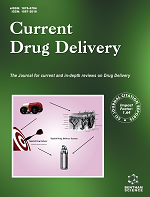
Full text loading...
We use cookies to track usage and preferences.I Understand
To prolong the ocular residence time of gatifloxacin and enhance its efficacy against bacterial keratitis, this study developed a velocity-controlled polyethylene glycol-dithiothreitol-boric acid (PDB) hydrogel loaded with gatifloxacin.
First, the basic properties of the synthesized PDB hydrogel and the gatifloxacin-loaded PDB hydrogel were assessed. Secondly, the in vitro degradation rate of the drug-loaded PDB was measured in a simulated body fluid environment with pH 7.4/5.5. The release behavior of the drug-loaded PDB was studied using a dialysis method with PBS solution of pH 7.4/5.5 as the release medium. Finally, a mouse model of bacterial keratitis was established, and tissue morphology was observed using hematoxylin-eosin staining. Additionally, mouse tear fluid was extracted to observe the antibacterial effect of the gatifloxacin-loaded PDB hydrogel.
The results showed that the PDB hydrogel had a particle size of 124.9 nm and a zeta potential of -23.3 mV, with good porosity, thermosensitivity, viscosity distribution, rheological properties, and high cell compatibility. The encapsulation of gatifloxacin did not alter the physical properties of the PDB hydrogel and maintained appropriate swelling and stability, with a high drug release rate in acidic conditions. Furthermore, animal experiments demonstrated that the gatifloxacin-loaded PDB hydrogel exhibited superior therapeutic effects compared to gatifloxacin eye drops and displayed strong antibacterial capabilities against bacterial keratitis.
This study successfully synthesized PDB hydrogel and developed a gatifloxacin drug release system. The hydrogel exhibited good thermosensitivity, pH responsiveness, stability, and excellent biocompatibility, which can enhance drug retention, utilization, and therapeutic effects on the ocular surface.

Article metrics loading...

Full text loading...
References


Data & Media loading...

